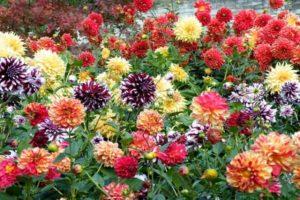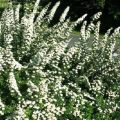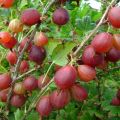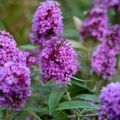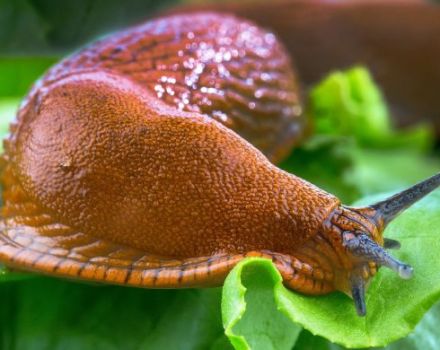Planting and caring for spirea in Siberia and variety selection, cultivation and reproduction
Often, gardeners pick up original shrubs for decorating plots. An important question remains the correct selection of a plant, taking into account climatic conditions. There are certain requirements for planting spirea in Siberia and caring for it. Although the shrub is hardy, it must be properly prepared for winter.
Features of growing spirea in Siberia
Spirea is an unpretentious plant, but growing in Siberia requires the only important condition - the selection of a variety adapted to this climatic zone. There are a lot of such varieties. Subject to the rules for care and nutrition, the plant gives abundant flowering.
Suitable varieties
Spirea has a large number of varieties, and many of these shrubs can be grown in Siberia. The plant can be conditionally divided, depending on the timing of flowering, into spring and summer. The most common ones are presented below.
Gray
One of the most popular varieties is hybrid. Obtained by crossing St. John's wort and grayish-white spirea. The shrub has white with a gray tinge flowers, forming bouquets, distributed along the entire length of the sprout. Blooms throughout the month, starting in mid-May.
The plant is sprawling, growing up to 2 meters. Crown formation occurs from spreading shoots. The leaf plates are oblong, have a deep emerald color. The lower part of the leaf plate is grayish.

Spirea Grefsheim is recognized as a striking representative of this hybrid. Differs in an original lush appearance, characterized by increased winter hardiness. Blooms in the second year after planting. The period lasts from 35 to 45 days. Double flowers, small, 10 mm in diameter, collected in bouquets.
Wangutta
Another representative of the hybrid. It is characterized by increased frost resistance. Representative of large bushes, height and scope can reach 2 meters in size.
Shrub formation occurs due to spreading branches, which are abundantly covered with jagged foliage. Leaf color: top - green, lower part - bluish. Small, up to 60 mm flowers create bouquets distributed across all branches. Blooms by mid-June. Some shrub species repeat flowering in August.

Willow
The bush is erect, growing up to 2 meters. The branches have a reddish tint, covered with spiky foliage, reaching a length of 0.1 m.A characteristic feature is that the leaf plates are whitish not from below, but from above.
Pyramidal bouquets of pinkish and whitish flowers are distributed over the bush. Differs in resistance to cold weather and increased endurance. Prefers to grow near water bodies.
Japanese
To a greater extent, it is the Japanese spirea that is recommended for cultivation in Siberia. It is characterized by increased resistance to temperature extremes and frost. A small shrub from 1 to 1.6 meters in height is characterized by a hemispherical shape. The leaves with a pinkish tint and gray-gray underneath give the plant a special charm and decorative effect. It blooms with small red-pink flowers. In autumn, the bush is a red-pink ball. Duration of flowering up to 2 months. This hybrid has the following varieties:
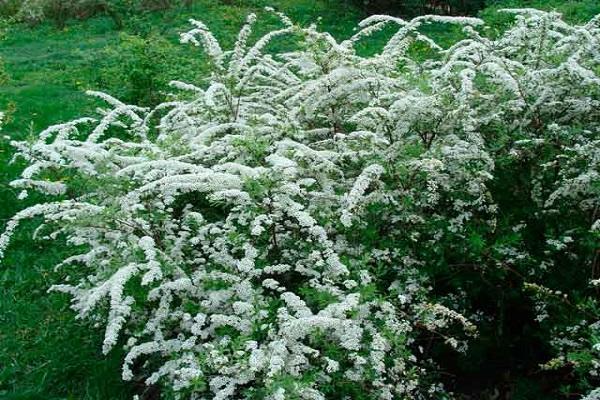
- Little Princesses. Low shrub, up to 0.65 m and up to 1.4 m in diameter. It has small dark green foliage. It blooms by mid-summer and is characterized by good cold resistance.
- Golden Princesses. It differs from the shrub described above in size, can reach a meter in height. Completely covered with yellow foliage.
- Shirobana. Shrub up to 0.8 m in height, crown span - up to 1.3 meters in diameter. It is characterized by narrow green leaves. Flowers are white, sometimes pink, blooms in the second decade of summer.
- Goldflame. A representative of low shrubs, up to 0.7 m, covered with stunningly beautiful bright foliage. They have a bright yellow color with an orange tint, after which they acquire a rich yellow, then a greenish color, at the end they become copper-orange. The color of the flowers is pink with a red tint.
Oakwood
It is characterized by unpretentiousness, it grows even on rocky ground. It is a small shrub with small green leaves, which acquire a golden color in autumn. Flowers are cream, collected in bouquets. Flowering duration - up to 20-25 days.
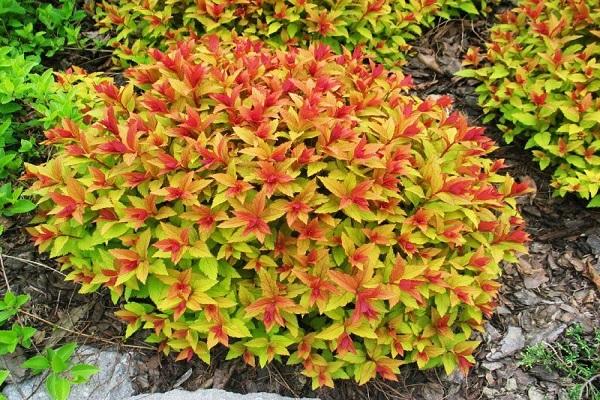
Billard
A hybrid that is a tall shrub, reaching 2 meters in size. The branches of the bush are densely covered with fleecy foliage up to 0.1 m long. The flowers are combined into pyramidal inflorescences. The plant does not give seeds, therefore it propagates by cuttings. It is characterized by increased frost resistance and whimsy in shade conditions.
How to grow a shrub?
Shrub cultivation is not difficult. The success of the plant development depends on the correct preparatory work and the implementation of the planting procedure. It is the correct fit that is the key to success. Therefore, it is important to buy high-quality seedlings, choose a place.

The choice of planting material
An important point is the acquisition of healthy planting material that meets all quality requirements, as well as the choice of exactly those species that are suitable for a given region. Spiraea is recognized as a hardy and frost-resistant shrub, so almost all varieties are able to adapt in Siberia.
Primary requirements:
- recommended to purchase at specialized points of sale;
- visual inspection of the bush is important: during spring planting, there should be no swollen buds or emerging leaves, and during autumn planting, the shrub should shed its foliage;
- view the roots (if they are open): the roots should be firm, without signs of mold, small damage increases the chance of infection;
- when buying shrubs in containers, the spirea sits down at any time.
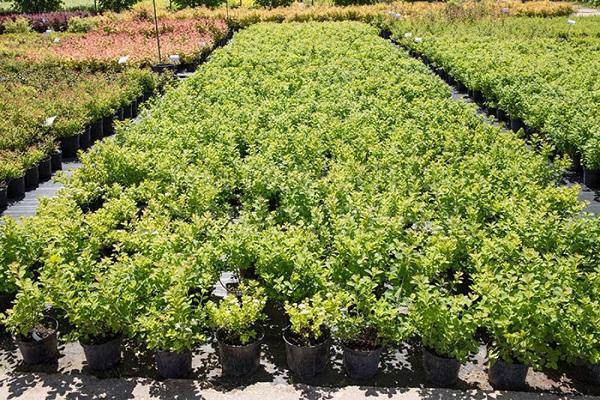
Soil preparation and site
The selection of the most favorable site and preparation of the soil that meets the requirements is the key to the full development of the shrub.
Despite the fact that the plant is considered unpretentious, it is necessary to create conditions for quick adaptation and abundant flowering. Accordingly, it is recommended to choose a sunny area, planting in a shaded place reduces the decorative qualities of the shrub. It is undesirable to plant in lowlands, especially where moisture and cold accumulate.
The culture has a sufficiently developed root system, therefore, it is undesirable to plant next to fruit shrubs and trees. Spirea needs a light, enriched soil that is easily permeable to oxygen. When planting in spring, it is important to prepare the soil in autumn, apply the necessary fertilizers.
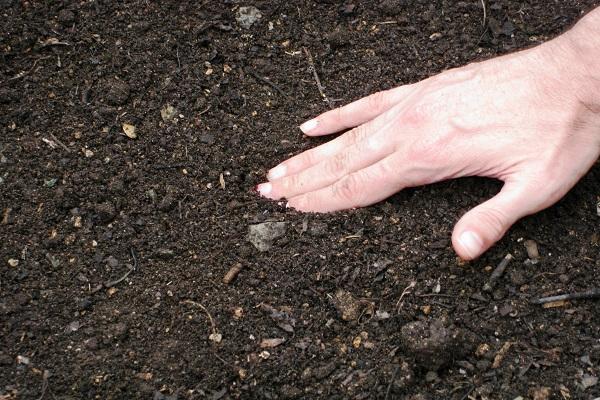
How and when to plant?
The shrub is planted in the spring or autumn, it depends on the selected variety and flowering period. When flowering in spring, it is recommended to plant in autumn. Optimal time: August - early September. Late varieties should be planted in early spring.
Sequencing:
- First, a landing pit is being prepared. This is done several days before landing. Depth up to 0.7 m, width depends on the type of shrub and the degree of development of the root system.
- When planting more seedlings, it is recommended to maintain a distance. If the planting is supposed to be used as a hedge, the distance is from 0.3 to 0.5 m. For single seedlings: undersized - 0.8 m, tall - at least one meter.
- Lay a drainage layer at the bottom, it is recommended to use crushed stone, crushed brick, expanded clay.
- If a seedling with open roots, it must be placed in a liquid, and the bush in the container must be watered.
- Further, it is recommended to trim the shoots and shorten the roots by 2-3 cm.
- Mix the soil with fertilizers, heat the hill, place the bush on it.
- Sprinkle the shrub with soil, compact thoroughly, water.
- Be sure to mulch, use peat, humus, pine needles.
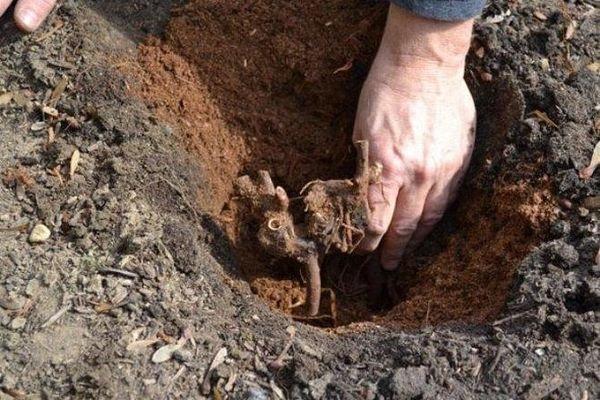
Flower care
Requirements for crop care are minimal:
- Stable watering is necessary, although the plant is recognized as drought tolerant. For a month, spirea should receive 12-16 liters of liquid. In hot weather, watering is carried out every 14-16 days, it should be abundant, especially for newly planted ones.
- After watering, the soil must be loosened to prevent crust formation. Loosening is carried out carefully and shallowly so as not to injure the roots.
- Periodically, it is required to put a layer of mulch in order to retain moisture, create a microclimate.
Nutrients for growth and flowering
For abundant fruiting, it is important to timely fertilize. In spring, nitrogen-containing preparations or organic matter are introduced. At the beginning of summer, the shrub needs to be fed with a complex of mineral preparations. At the end of summer, enrich the soil with phosphorus-potassium preparations.

How to prune a spirea?
Sanitary pruning of the shrub is carried out in spring, all weakened shoots that have damage are removed. For spring flowering crops, only the tops should be trimmed. In the later ones, all branches are shortened by 1/3. In bushes of seven years of age, it is recommended to perform anti-aging pruning: remove all branches, leaving 6-7 young ones.
Shelter for the winter
The plant is considered hardy, but still needs shelter. The branches must be tied and bent to the ground, sprinkled with foliage, needles.
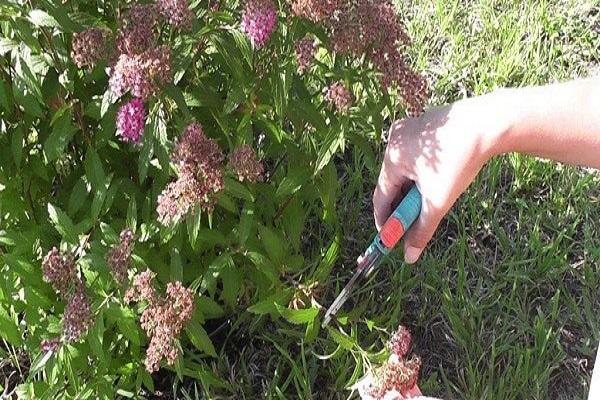
Protection against diseases and pests
The plant is not susceptible to diseases. But pests like spiraea, especially the spider mite. Signs of damage: cobweb, yellowness and leaf fall, a painful appearance of the plant. Treatment with "Phosphamide", "Karbofos" will be effective.
Aphids that overpower a plant suck the juices out of it. It is recommended to use Pyrimor or other drugs.
Reproduction of spirea in Siberia
This culture multiplies in several ways. Each of them has its own pros and cons, with some varieties only one way is suitable. For example, Billard is only bred by cuttings.
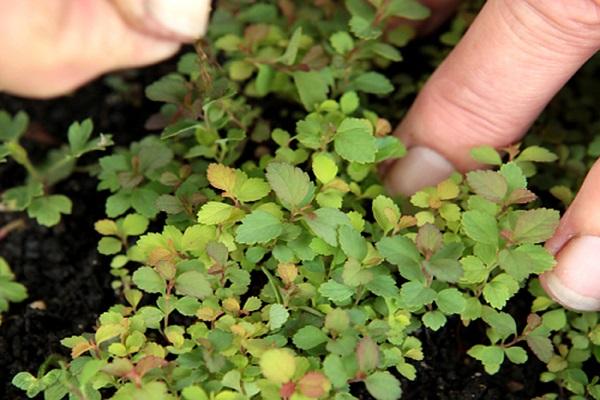
Breeding methods:
- Seminal. Only specific shrubs reproduce, hybrid varieties do not produce fruits. Seeds are collected from ripe bolls. The germination rate is high.Seeds are sown in a prepared container, water, cover with foil. Remove the film after emergence. When 2-3 leaves appear, dive.
- Layers. A simple and effective way. Bend the lower branches of the bush to the ground in the spring, fix, sprinkle, leaving the top. In autumn, plant the cuttings on a permanent site.
- Cuttings. The rooting coefficient is 70. Depends on the flowering period: the early shrubs are cut in the first days of June, the late ones - in July. If the cuttings are lignified, it is carried out in the fall. Prepare cuttings with 5-6 leaves, the recommended length is 0.1 m. Remove the lower foliage. Soak in a growth stimulator for half a day. Plant in prepared containers with soil mixture at an angle. Cover with jars or plastic wrap. Irrigate periodically and water regularly. For the winter period, dig in the cuttings and cover them, and in the spring plant them on a site of constant growth.
Compliance with simple planting and care requirements contributes to the active development and abundant flowering of the shrub, timely preventive treatment will save the flower from pests.

